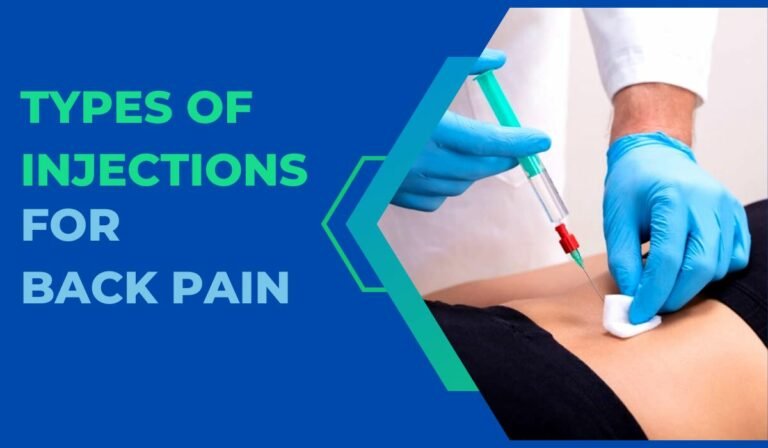Managing Gout

I have a name men dread and loathe to hear; They call me GOUT, a fearsome scourge to men;
I bind their feet in sinew-knotting cords, When I have swept unseen into their joints.
FROM Lucian (Greek playwright, c. 125-190A.D.)
Gout, the most common inflammatory, arthropathy (joint) disease, currently affects over eight million Americans, with the number of cases increasing annually. Gout is caused by uric acid (UA) levels so high that the acid precipitates out of the blood and deposits into joints and soft tissue in the form of crystals. Gout was identified in 2640 BCE by the Egyptians and described by Hippocrates in the fifth century BCE as the “unwalkable disease.” It has often been the topic of literary work; the 17th-century English physician Thomas Sydenham, who suffered from gout himself wrote:
“The pain resembles that of a dislocated bone…The pain …, which is mild in the beginning …, grows gradually more violent every hour …so exquisitely painful as not to endure the weight of the clothes nor the shaking of the room from a person walking briskly therein.”
Gout has earned its infamous reputation not only from the famous people it has stricken (King Henry VIII, Benjamin Franklin, and top athletes including the NBA’s Maurice Cheeks), but also because of the excruciating, relentless pain it causes. Gout affects both men and women. One male sufferer of gout said that gout had to be more painful than childbirth. When a colleague asked how he could know that, the man replied that he knows plenty of women willing to have another child, but he doesn’t know anyone willing to have another gout attack!
Traditionally, gout has been thought of as an occasional or intermittent nuisance. But gout is on the rise as Americans live longer, have higher rates of obesity and eat more uric acid-producing diets. Gout’s acute and painful episodes can be so severe that they can prevent one from walking or going to work. If left untreated, gout can develop into a debilitating chronic arthritis, which may lead to chronic pain, increased health care costs and missed work.
GOUT defined
So what is gout? The classic description of gout is acute gouty arthritis, in which the deposited crystals (a large aggregation is called a tophus, and very small aggregation is known as a microtophus) are disturbed by a variety of factors. One factor can be a rapid change in UA levels— perhaps a steak and shrimp dinner that raises levels, or a medication change that lowers levels. Other triggers include dehydration, fasting, taking certain medications (for example, furosemide or “water pills”), another illness, surgery, or even stress. Episodes frequently begin at night or in the early morning, with rapidly escalating pain and swelling. Within 24-48 hours, the joint becomes warm, red and extremely tender, potentially mimicking cellulitis or even an infected joint. Acute attacks, known as podagra, typically affect the big toe (up to 50% of initial attacks), while the mid-foot, ankles, knees, elbows and fingers can be commonly affected. Untreated, an acute gout attack usually resolves without treatment within a week to ten days. People who have experienced one attack often have a second attack within six months to two years. Subsequent attacks frequently last longer than the initial attack and are more likely to affect joints besides the big toe.
After an acute attack, gout isn’t just a painful distant memory. The deposition of UA crystals, in the form of tophi, continues as the UA levels remain high, causing low-grade joint inflammation and continued joint destruction. Visible and even deforming tophi can develop within five years of the onset of gout in 30 percent of untreated patients.1
INCREASE OF GOUT: the food factor?
Clinicians have known for more than a thousand years that dietary indiscretions may increase the risk of gout. The consumption of alcohol or meats (especially organ meats) and other foods with high purine con-tent (such as seafood) have been long associated with increasing the risk for gout. In the United States, the incidence of gout has undergone a striking three-to-four-fold increase in the last 50 years, parallel with increases in obesity and diabetes. In addition, this increase has occurred alongside the increased consumption of products containing high-fructose corn syrup. This sweetener causes the body to produce more UA compared to other sweeteners such as simple glucose. Consistent with this trend in sugar consumption, obesity is also a known risk factor for gout.
It remains unknown why some people with gout-enabling diets or with elevated UA levels never develop gout, some have mild symptoms that are easily managed, and others progress to a severe, debilitating form of gout. These different outcomes indicate that additional factors such as genetics, pre-existing osteoarthritis, and others likely play a role in developing gout.
Regardless of one’s predisposition to gout or exposure to gouty risk factors, we do know the risk of acute gout rises with one’s UA concentration. In one study of patients with UA levels > 6.0 mg/dL, men were 4 times more likely to develop gout than those without elevated UA levels.2 The same study showed that women were 17 times more likely to develop gout when their UA levels are > 6.0 mg/dL, compared to their counterparts with UA levels < 6.0 mg/dL.
RELATED: Nutrition and Pain – Food, Spices and Lifestyle Choices that Reduce Pain
MANAGING gout
Managing gout is intrinsically straightforward. There are two primary goals: first, to stop the inflammation and associated pain and swelling of an acute attack, and second, to reduce and maintain UA levels well below that of the physiologic super-saturation of UA in the bloodstream (>6.8 mg/dL). Taking care of the latter will also (eventually) prevent the former.
UA levels less than 6.0 mg/dL is the recommendation for most patients, and maintaining levels below this number allows for the mobilization of UA crystals out of joints and soft tissue, eventually eliminating the nidus of acute and chronic inflammation. With appropriate therapy and compliance, most people with gout should be able to achieve full remission.
NEW ATTENTION, new therapies
With the increased prevalence of gout, there has been renewed attention to its management, leading to the development of several new therapies. There are many medications that treat acute gout and lower UA levels in order to prevent recurrent gout flares and gouty arthritis. In conjunction with resting the joint and applying ice, analgesic pain medications such as acetaminophen may help alleviate some symptoms, but do not treat the underlying process and typically are inadequate in managing the pain. Current primary options for anti-inflammatory management of acute gout include non-steroidal anti-inflammatory drugs (NSAIDs), such as ibuprofen or naproxen.
When used at a full anti-inflammatory dose, all NSAIDs appear to be equally effective. Ibuprofen (800mg q 8 hours), naproxen (500mg q 12 hours) and indomethacin (50mg q 8 hours) are the most commonly used regimens. Adequate dosing and duration are important; treatment should be continued until the flare has resolved and then reduced in tapered doses for at least two or three days after all signs of inflammation are gone.
WITH APPROPRIATE THERAPY AND COMPLIANCE, MOST PEOPLE WITH GOUT SHOULD BE ABLE TO ACHIEVE FULL REMISSION.
In addition to NSAIDs, colchicine (Colcrys) and corticosteroids also dampen the inflammatory mechanism that causes the severe pain and swelling. In traditional colchicine dosing regimens, the medication was given every one to two hours repeatedly for multiple doses until the gout flare subsided or the patient experienced gastrointestinal toxicity, including severe diarrhea, nausea and vomiting.
More recently it has been shown that such counterproductive high dosing isn’t necessary to effectively treat an acute gout attack.3 Colchicine treatment in low doses, or 1.2 mg followed by 0.6 mg in 1 hour (1.8 mg total), is comparable to high-dose colchicine in efficacy but does not cause the gastrointestinal side effects.
Corticosteroids are also effective in the management of acute gout and are comparable to NSAIDs and colchicine. At least 40mg of prednisone daily is typically needed to adequately treat an acute gout flare, but if the prednisone is tapered too quickly, a rebound flare can result. Therefore, to prevent back-to-back flares, the medication must be tapered over the course of 10-14 days in most cases.
NEW research
Investigational therapies for the treatment of acute gout are well underway. Anakinra, a medication that inhibits an important immune response in gout and is approved for rheumatoid arthritis, has been shown to be effective in treating the pain and inflammation of acute gout.4 Similar acting medications, including Rilonacept5 and Canakinumab,6 have shown promising results both as a treatment for acute, difficult-to-treat gout attacks and prevention of recurring attacks, but the availability of these medications for acute gout in the future is unknown.
EFFECTIVE TREATMENTS and risk factors
Regardless of which medication or combination of medications one chooses to treat an acute flare, the most important predictor of success in stopping the attack and controlling the pain is when the treatment is initiated. The earlier anti-inflammatory treatment is started, the more rapidly the acute flare will subside. The use of these individual agents may be limited by broad drug toxicities, particularly in subjects with significant co-morbidities.
By lowering and maintaining UA levels (below 6.0mg/dL) the UA crystal burden will eventually resolve, eliminating acute attacks. To reduce the UA level below 6.0 mg/dL, a multi-discipline approach is best. This includes communicating and educating the patient regarding lifestyle strategies and medical interventions.
As discussed earlier, obesity and certain patterns of food and alcohol consumption can increase the risk of developing high UA levels and gout. In addition to weight loss, dietary changes such as reducing intake of meats, high-fructose sweeteners and alcohol, as well as increasing intake of vitamin C or Bing cherries may lower serum urate levels modestly (i.e., by 1or 2 mg/dL).7
While lifestyle interventions may be all that is needed to manage early mild gout, such interventions generally do not replace the need for urate-lowering drug therapy in cases of existing gout. Preventing the body’s ability to produce UA and helping the body eliminate UA lower UA levels and prevent the development of gout.
MEDICATIONS USED to manage gout
There are currently only four FDA-available medications in the United States to lower UA levels. Allopurinol and febuxostat both prevent the body from making UA, while probenecid and pegloticase help the body eliminate UA via the kidneys in different ways.
Pegloticase is reserved for patients who have failed to be controlled by or who have contraindications to allopurinol, febuxostat or probenecid. All are effective in lowering uric acid levels in most patients, but as with the medications used to treat acute gout, individual side effect profiles and tolerance may vary.
There are several potential medications in development to lower UA levels and treat gout. Lesinurad, a medication that helps the kidney eliminate UA, has fewer potential interactions and contraindications than probenecid and is currently in phase III clinical trials.8 Tranilast is another medication that acts on the kidney, making it more efficient at eliminating UA.9 Finally, ulodesine, another medication to prevent the body from making UA, is under development and has been shown to be effective in lower UA levels in phase II clinical trials.10
THE FUTURE of gout
People with gout have more co-morbidity, poorer quality of life and physical function, and increased health care costs. More specific and targeted treatment options such as febuxostat and pegloticase, which address co-morbidities such as obesity, provide the clinician and patient with additional opportunities to effectively treat chronic gout, resolve the uric acid burden, and not only reduce but eliminate chronic and acute pain and suffering.
The antiquity of gout may have contributed to the perception and complacency surrounding its management for centuries past, but with new insight into gout’s mechanism and therapeutics, the future is very bright for those with this painful and debilitating disease.
SPECIAL THANKS TO THE AMERICAN COLLEGE OF RHEUMATOLOGY FOR THEIR PARTNERSHIP AND TO ROBERT T. KEENAN, MD, MPH, ASSISTANT PROFESSOR OF MEDICINE, DIVISION OF RHEUMATOLOGY AND IMMUNOLOGY AT DUKE UNIVERSITY SCHOOL OF MEDICINE. DR. KEENAN IS A MEMBER OF THE AMERICAN COLLEGE OF RHEUMATOLOGY.
- Schumacher HR, Jr., Becker MA, Palo WA, Streit J, MacDonald PA, Joseph-Ridge N. Tophaceous gout: quantitative evaluation by direct physical measurement. J Rheumatol. Dec 2005;32(12):2368-2372.
- Zhang W, Doherty M, Pascual E, et al. EULAR evidence based recommendations for gout. Part I: Diagnosis. Report of a task force of the Standing Committee for International Clinical Studies Including Therapeutics (ESCISIT). Ann Rheum Dis. Oct 2006;65(10):1301-1311.
- Terkeltaub RA, Furst DE, Bennett K, Kook KA, Crockett RS, Davis MW. High versus low dosing of oral colchicine for early acute gout flare: Twenty-four-hour outcome of the first multicenter, randomized, double-blind, placebo-controlled, parallel-group, dose-comparison colchicine study. Arthritis Rheum. Apr 2010;62(4):1060-1068.
- So A, De Smedt T, Revaz S, Tschopp J. A pilot study of IL-1 inhibition by anakinra in acute gout. Arthritis Res Ther. 2007;9(2):R28.
- Terkeltaub R, Sundy JS, Schumacher HR, et al. The interleukin 1 inhibitor rilonacept in treatment of chronic gouty arthritis: results of a placebo-controlled, monosequence crossover, non-randomised, single-blind pilot study. Ann Rheum Dis. Oct 2009;68(10):1613-1617.
- So A, De Meulemeester M, Pikhlak A, et al. Canakinumab for the treatment of acute flares in difficult-to-treat gouty arthritis. Arthritis Rheum. Jun 8 2010.
- Choi HK. Diet, alcohol, and gout: how do we advise patients given recent developments? Curr Rheumatol Rep. Jun 2005;7(3):220-226.
- Tan PK, Hyndman D, Lius, Quart BD, Miner JN. Lesinurad (RDEA594), A Novel Investigation Uricosuric Agent For Hyperuricemia and Gout, Blocks Transport of Uric Acid Induced By Hydrochlorothiazide. Ann Rheum Dis. 2011;50(Suppl 3):187.
- Sundy JS, Kitt MM, SG G, RR S, R G. The Combination of Tranilast with Allopurinol Results in Enhanced Urate Lowering. Arthritis & Rheumatism. 2010;62(10Supplement):S67.
- Perez-Ruiz F, Herrero-Beites AM. Evaluation and treatment of gout as a chronic disease. Adv Ther. Nov;29(11):935-946.
PainPathways Magazine
PainPathways is the first, only and ultimate pain magazine. First published in spring 2008, PainPathways is the culmination of the vision of Richard L. Rauck, MD, to provide a shared resource for people living with and caring for others in pain. This quarterly resource not only provides in-depth information on current treatments, therapies and research studies but also connects people who live with pain, both personally and professionally.
View All By PainPathways






